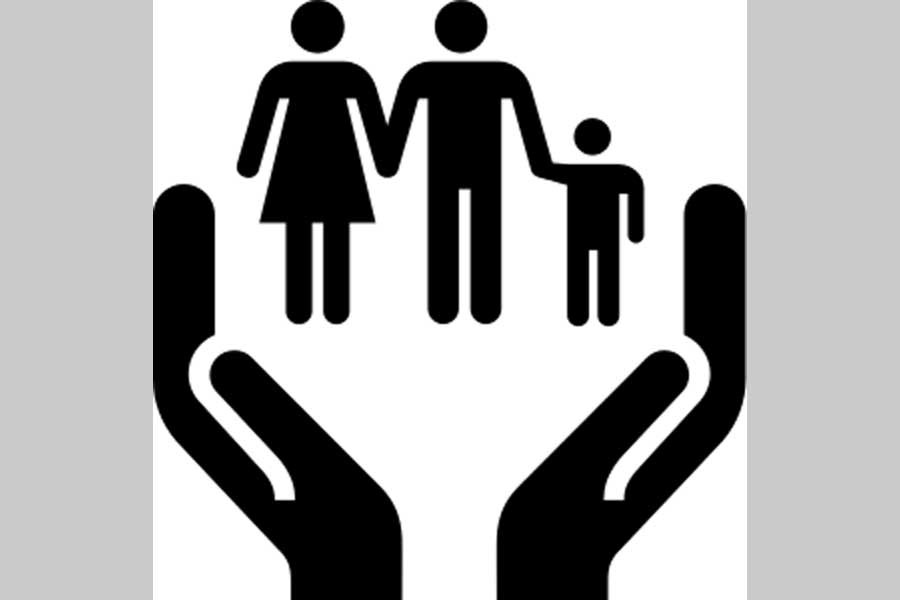
Published :
Updated :

There is, no doubt, an increasing focus these days on the social safety net programmes (SSNPs) --- not only within the scope of the government's poverty alleviation exercise but also in the public discourse. Despite the many odds stacked against smooth execution of the programmes, the government is pretty upbeat about SSNPs' success in bringing the poverty graph on a downward curve and helping out some sector-specific activities.
The government is reportedly going to expand its social safety net programmes (SSNPs) by increasing the number of beneficiaries by around four hundred thousand. The decision to bring in new beneficiaries came following a cabinet committee meeting last week. However, the money currently being given will remain unchanged. The finance ministry, meanwhile, has issued two circulars to bring all safety net programmes under a new structure in order to reduce leakage, misuse, and corruption.
It has been learnt that inclusion of fresh beneficiaries will take place under two major SSN schemes for elderly people and widows, deserted, or destitute women. The government's allocation for the Old age Allowance programme in the current fiscal is Tk 4,205 crore. Men above the age of 65 and women aged more than 62 with an average annual income of less than Tk 10,000 are eligible. Eligible elder citizens are currently getting the benefit in 262 upazilas under the exising programme. Around 58.01 lakh elderly people are getting Tk 600 per month in the ongoing fiscal. The allocation for the widow, deserted, or destitute women programme is Tk 1,711 crores. Around 25.75 lakh women are currently beneficiaries of the scheme. Under the programme, women aged 18 and above and with an annual average income below Tk 12,000 are getting allowances of Tk 550 per month. The increase in the number of both the categories will be two hundred thousand each.
Presently, the government runs well over a hundred programmes under the SSNPs, and the allocation for FY24 is Tk 126,000 crore. The major SSNPs can be grouped under four broad categories: (i) employment generation programmes; (ii) programmes to cope with natural disasters and other shocks; (iii) incentives provided to parents for their children's education; and (iv) incentives provided to families to improve their health status.
Given that the programme is growing, though very slowly, corruption and misuse of funds are the most commonly alleged practices plaguing the operations. Moreover, although the allocation has increased over the years, it has been found to be still far less than what it should have been in terms of standard practices followed elsewhere. Analysts opine that Bangladesh has been spending less than half of what other countries spend as a percentage of their gross domestic product (GDP). Most middle income countries spend between 6.0 to 8.0 per cent of the GDP on social safety net programmes as against little over 2.0 per cent of GDP in Bangladesh.
The country currently has no less than forty million people living below the poverty line, but the number may shoot up twice as many in foreseeable future if the SSN allocations are not substantially raised and efforts taken to avoid abuse of funds. As for the execution and efficacy of the programmes, one important finding, according to analysts, is the overlapping nature of the programmes under various ministries. Around 140 SSN programmes are currently being implemented by 23 ministries, a large number of which suffer from overlapping in various forms. Besides, due to the lack of coordination and monitoring of progress in a proper manner, transparency and accountability are the major casualties.
At a roundtable held recently speakers came up with some lacunas that they believe do not allow the social safety net schemes work in a desirable way. A good deal of these is policy related. For example, inclusion of retired government employees as beneficiaries of the SSNPs does not strike the right chord in alleviating poverty of the really needy people. Some 27 per cent of the SSN allocations go as pension to the government employees. One may argue whether to treat such allocations as truly SSN allocations given the state of the people who deserve these more than any other groups.
Targeting the right groups is crucial as it is believed that wrong targeting may result in increasing poverty gaps instead of reducing it. For, not all in need of SSN protection live in similar geographies and socio-economic conditions. There is thus a critical need to look into area-specific and other related factors in determining the level of poverty.
The government should prepare a detailed database of the number of people living below the poverty line, which will help the stakeholders involved in understanding the needs of different target groups and strategise result-orientated plans. Improved management of the schemes, along with an efficient use of resources and plugging the loopholes in the distribution process is important in making the social safety nets more effective. It is also important to strengthen the monitoring and supervision system relating to the implementation process to make the schemes more accountable.


 For all latest news, follow The Financial Express Google News channel.
For all latest news, follow The Financial Express Google News channel.